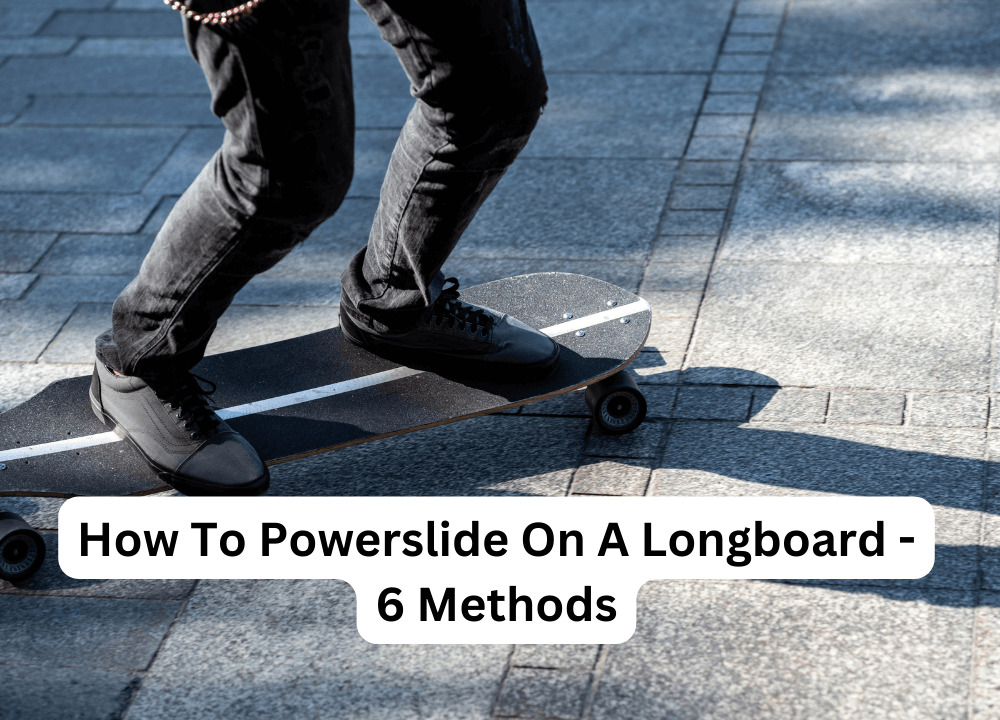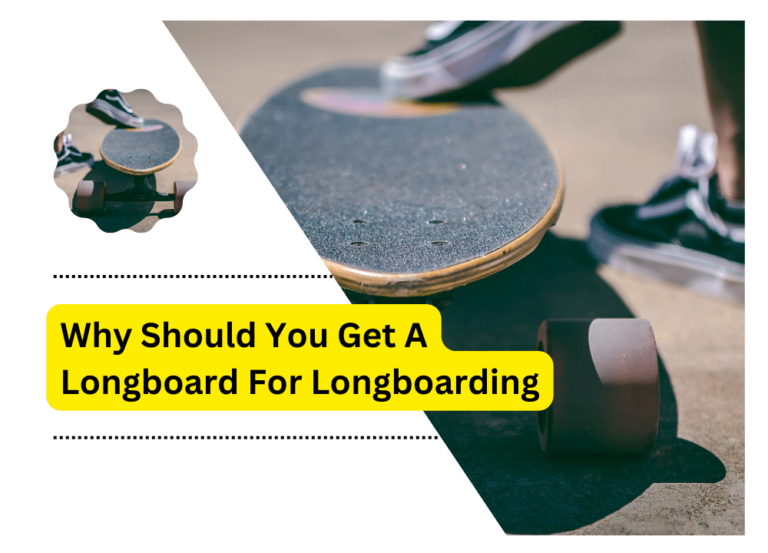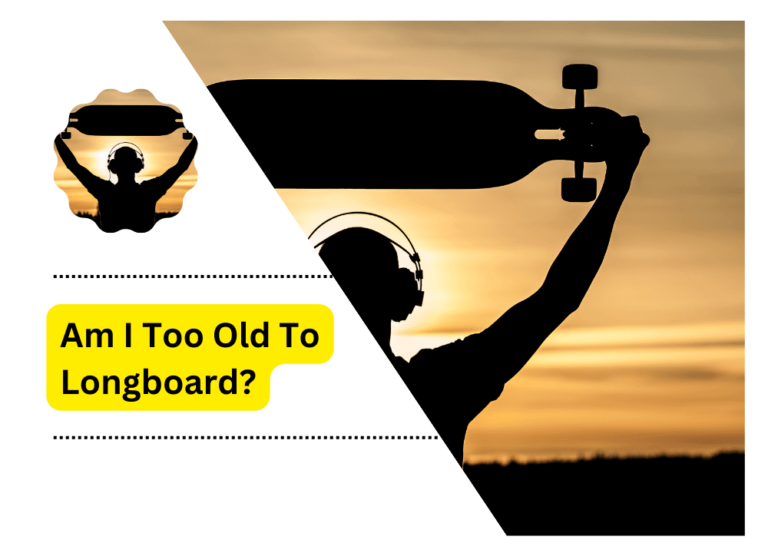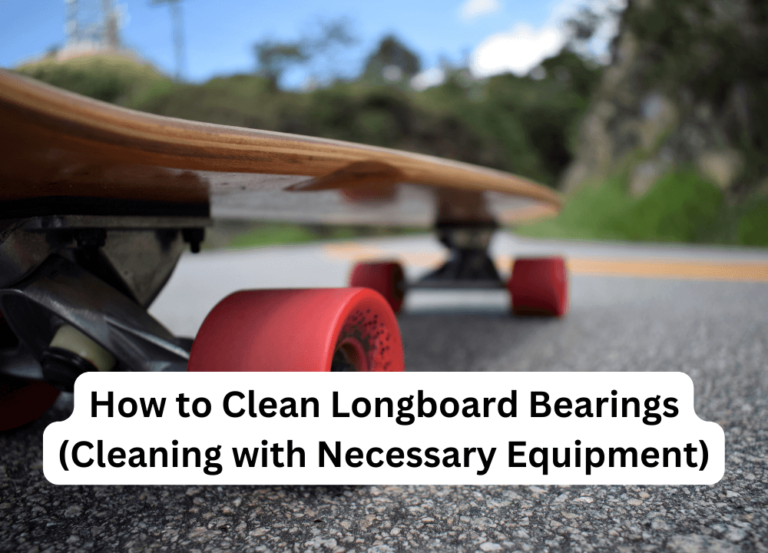How To Powerslide On A Longboard – 6 Methods

If you know or want to learn how to power slide on a longboard, the first thing you need to do is gather information about the power slides, and sewing is a great way to slow down or slow down. It’s not as difficult as you think; with some practice, you can spread like a pro without wasting time. Power sliding is one of the most exciting things people can do. If it is done correctly, it looks like it is sliding on the floor. Skating is a technical trick that must be mastered.
First, you must ensure your longboard is well-prepared. The wheels are specially made for sliding and will help you stay in control; therefore, remove and replace them. Next, practice on a smooth, level surface. A paved road or driveway is a good option. Start by riding slowly, then increase your speed until you’re comfortable. Once mastered now, you can power slide anywhere around you. It’s tricky, but repeated practice will ensure it for you. Finally, always be cautious and use your best judgment. Don’t attempt to powerslide in traffic or on a crowded sidewalk.
How to Powerslide On a Longboard?
- Heelside Stand-up Slide
- Toeside slides (facing uphill)
- 180° slides (finish in switch stance)
- Coleman / glove down slides
- Sliding with a pendulum (hands on the ground, swing board around hands while sliding)
- Speed checks (partial slide for slowing down)
Heelside Stand-up Slide
If you are sliding down on your heels, taking immediate action is essential to prevent further injury. Try to dig your heels into the ground and push yourself back up to a standing position. If you cannot do this alone, ask for assistance from someone nearby.
Sliding downward on your heels is an action in which your feet go backward while your heels remain on the ground. This movement is usually used in fitness workouts to target the lower body muscles, such as lunges and knee variations.
Follow these instructions to achieve a sliding downhill on the movement of your heel:
- Set your feet hip-width apart, with your weight centered on your heels.
- Slide your feet backward slowly, bending your knees as you go.
- As you slide back, keep your heels on the ground.
- Keep your weight on your heels and avoid leaning forward to prevent injury.
Slides on the toes (uphill)
Toe slides should be performed uphill to maintain proper form and prevent injury.
To make a pre-carve, begin by pressing your toes forward and your body forward. It will cause a toeside turn. It can go either right or left, depending on your riding stance. A typical longboard rider, for example, moves in the right direction when doing a toeside carve, while a goofy rider goes towards the left. The key is maintaining your knees bent to reduce your center of gravity.
Toe slides are an exercise that should perform uphill to maintain proper form and prevent injury.
Toe slides can perform with either one or two legs and the left or right foot leading. Proper form when performing a toe slide includes keeping the knees bent, the hips square, and the shoulders back.
Since you’re squatting down on your longboard, some riders find sit-down slides less intimidating and easier to learn. Stand-up slides are simpler to learn on, especially for older riders.
180° slides (finish in switch stance)
You can use your favorite riding techniques to speed up and slide while performing 180s. To make a longboard turn 180 degrees after you have finished sliding, give the front side a decisive turn. Although it may seem simple when reading or seeing the procedures online, you must put in a lot of practice.
Coleman / glove down slides
Coleman is the type of slide that beginners can train. Coleman or glove-down power slides are a type of longboard slide that involves using a sliding glove to drag the hand on the ground while leaning back on the board to slide sideways. It allows riders to control their speed and direction while maintaining balance and control over their board.
To execute correctly, one must practice perfect technique and use protective gear, such as gloves and a helmet. The Coleman, also known as the glove down power slide, is a popular and necessary technique for longboarders who want to maintain control while descending slopes or carving tight bends.
Sliding with a pendulum (hands on the ground, swing board around hands while sliding)
A hands-down slide known as a pendulum involves bouncing from side to side as you slide. It’s an excellent technique for slowing down while traveling swiftly, and it’s typically the first slide a newbie learns. It entails using one’s shoulders to help control the longboard’s sliding direction.
Checks for speed (half slide for slowing down)
Powersliding requires speed, which can be learned only at a specific rate. The longboard can be fastened in a variety of ways. Replace the older wheels with more appropriate (harder) ones first. It will increase the speed at which you ride. Additionally, oil and clean the bushing inside the rollers. Start practicing riding down hills if you want to keep your board the same by replacing the wheels and bushings for a comprehensive method of making your board quicker.
Tips and common mistakes
- Need help getting your longboard to powerslide? Check out these typical errors:
- Instead of sliding out the board, are you only turning on your front truck as your back wheels lift off the ground? Avoid leaning your board to one side by placing too much weight forward.
- Before kicking out, are you doing a good heelside carve? Or are you simply riding straight and kicking out your board with your rear foot?
- Before slipping, do you place your weight on your front foot? You won’t be able to kick out and slide if your weight is on your rear foot.
- Are you leaning back far enough once you launch out and begin sliding? Or are your wheels catching because you’re leaning too far forward? Leaning back is challenging because it calls for faith and dedication; just remember to bend at the bottom of the slide to prevent sliding backward.
- Do you have flat spots to use a more advanced term? i.e., flat spots on your wheels from constant 90-degree sliding. After becoming proficient at basic sliding, attempt sliding at an angle (not entirely perpendicular) to obtain a similar wear pattern to avoid problems and prolong the lifespan of your wheels.
Safety Tips and Precautions While Performing Powerslides
Powerslides are a thrilling move on the skateboard, but they can also be dangerous. Follow these safety tips and precautions to help prevent injury while performing powerslides:
1. Warming up and stretching before skating can help prevent injury.
2. When performing powerslides, approach the slide slowly and deliberately.
3. Use your body weight to initiate the slide, and keep your center of gravity low.
4. Keep your back straight and your knees bent throughout the slide.
5. As you come out of the slide, use your back foot to help stop yourself.
6. Practice sliding in a controlled environment like a skatepark before trying it out on the streets.
7. Constantly wear safety equipment, such as helmets, elbow and knee pads, and wrist guards.
You’ve now learned the fundamentals of longboarding powerslides. Failure on the first few tries is acceptable; it’s expected. Furthermore, injuries are not rare, but once you perfect your first powerslide, you will be ecstatic.





